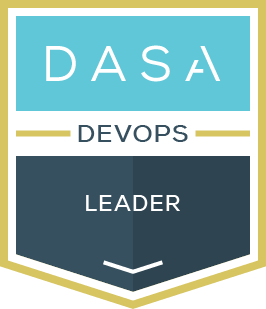Digital transformations are often praised as the key to developing sustainable and resilient businesses, driving efficiency, and enhancing customer experiences. However, digital transformations can be complex, costly, and full of challenges, particularly when the human aspect is overlooked. In this article, we explore how a human-centric approach to digital transformation can lead to successful change and adoption, offering practical strategies to achieve this.
The Importance of Human-Centric Digital Transformation
Understanding the Challenges
Digital transformations aim to integrate digital technology into all areas of a business, fundamentally changing how it operates and delivers value to customers. Despite its potential benefits, many digital transformation efforts fall short due to poor digital employee experiences, leading to frustration and high turnover rates. According to a survey by WalkMe, 61% of leaders believe that poor digital employee experiences contribute to resignations in their organizations. This statistic underscores the importance of prioritizing the human element in digital initiatives.
Research by Ernst & Young and SAID Business School reveals that digital transformation programs that prioritize a human-centric approach are up to 12 times more successful than those that do not. Benefits of this approach include:
- Improved Employee Satisfaction and Morale: Employees feel more engaged and valued when their needs and experiences are prioritized.
- Increased Innovation and Agility: A human-centric approach fosters a culture of continuous improvement and adaptability.
- Enhanced Customer Satisfaction: Products and services that meet the actual needs of customers lead to higher satisfaction and loyalty.
- Business Growth: Satisfied employees and customers drive business growth, which is a primary goal of digital transformation.
Strategies for Achieving Human-Centric Digital Transformation
1. Human-Centered Design
Human-centered design (HCD) is an approach that emphasizes understanding the needs, preferences, and challenges of end users at the beginning of the digital transformation process. The HCD process consists of four key stages. First, the Empathize stage involves gathering insights into the experiences and challenges of users through interviews, surveys, and observations. Next, in the Define stage, the problems and needs identified during the empathize phase are clearly articulated. In the Ideate stage, brainstorming sessions generate potential solutions, with ideas prioritized based on feasibility and impact. Finally, in the Prototype and Test stage, prototypes of the proposed solutions are developed and tested with users, and adjustments are made based on their feedback.
A case study of an online travel marketplace illustrates the successful application of HCD. The company involved cross-functional teams in workshops to better understand customer needs and prioritize processes. This approach led to strong stakeholder buy-in, improved collaboration, and a more focused direction, ultimately enhancing the customer experience.
2. Change Management
Change management is crucial for guiding organizations through the transition brought about by digital transformation. Three effective change management strategies are:
- ADKAR (Awareness, Desire, Knowledge, Ability, Reinforcement): This bottom-up approach focuses on building awareness and desire for change, providing knowledge and ability to implement the change, and reinforcing the change to ensure it sticks.
- Nudge Theory: This approach leverages small, incremental changes to influence behavior without mandating it, focusing on individual preferences and motivations.
- Satir Change Model: This model emphasizes emotional connection and engagement, guiding individuals through stages of resistance, chaos, integration, and the establishment of a new status quo.
For example, a map technology specialist used a combination of ADKAR and Nudge Theory to roll out collaboration tools as part of their digital workplace strategy. The approach included roadshows, demos, change champions, blended learning, and social proof, resulting in high buy-in, peer-to-peer influence, and targeted adoption.
3. Digital Adoption
Digital adoption is centered on ensuring that users successfully engage with and utilize new digital tools and technologies. A critical aspect of this process is the development of customized training programs that provide a variety of learning options to accommodate the diverse needs and skill levels of users. One effective strategy for driving adoption is the use of change champions—enthusiastic individuals who are identified and empowered to influence and support their peers throughout the transition. Additionally, monitoring and analytics play a crucial role in tracking user engagement and pinpointing areas where further assistance is required.
A report by WalkMe underscores the growing importance of digital adoption, revealing that 63% of organizations now consider adoption a key performance indicator. Tailored training, the strategic use of change champions, and continuous monitoring are fundamental to a successful digital adoption strategy.
Integrating Strategies for Success
To achieve a successful human-centric digital transformation, it is essential to integrate human-centered design, change management, and digital adoption strategies. This integrated approach ensures that the needs of end users are prioritized, change is managed effectively, and adoption is sustained over the long term. Through this integration, there are some key steps for a successful human-centric digital transformation:
- Develop a Compelling Story: Create a clear and compelling narrative that explains the purpose and benefits of the digital transformation.
- Implement Human-Centered Design Early: Begin with a thorough understanding of end user needs and iterate solutions based on feedback.
- Select the Right Change Management Strategy: Choose a strategy that aligns with the organization’s culture and the nature of the transformation.
- Plan for Digital Adoption: Develop a comprehensive adoption plan that includes training, support, and monitoring.
- Review, Run, and Repeat: Continuously review and refine the process to adapt to new challenges and opportunities.
Conclusion
Humanizing digital transformation is not just about implementing new technologies; it’s about ensuring that these technologies meet the needs of the people who use them. By prioritizing human-centered design, effective change management, and robust digital adoption strategies, organizations can achieve more successful and sustainable digital transformation outcomes. This approach not only enhances employee and customer experiences but also drives innovation, agility, and business growth.


DASA DevOps Leader
Helps leaders understand leadership in the context of DevOps, discusses leadership development models, building teams, and transforming the organisation.
